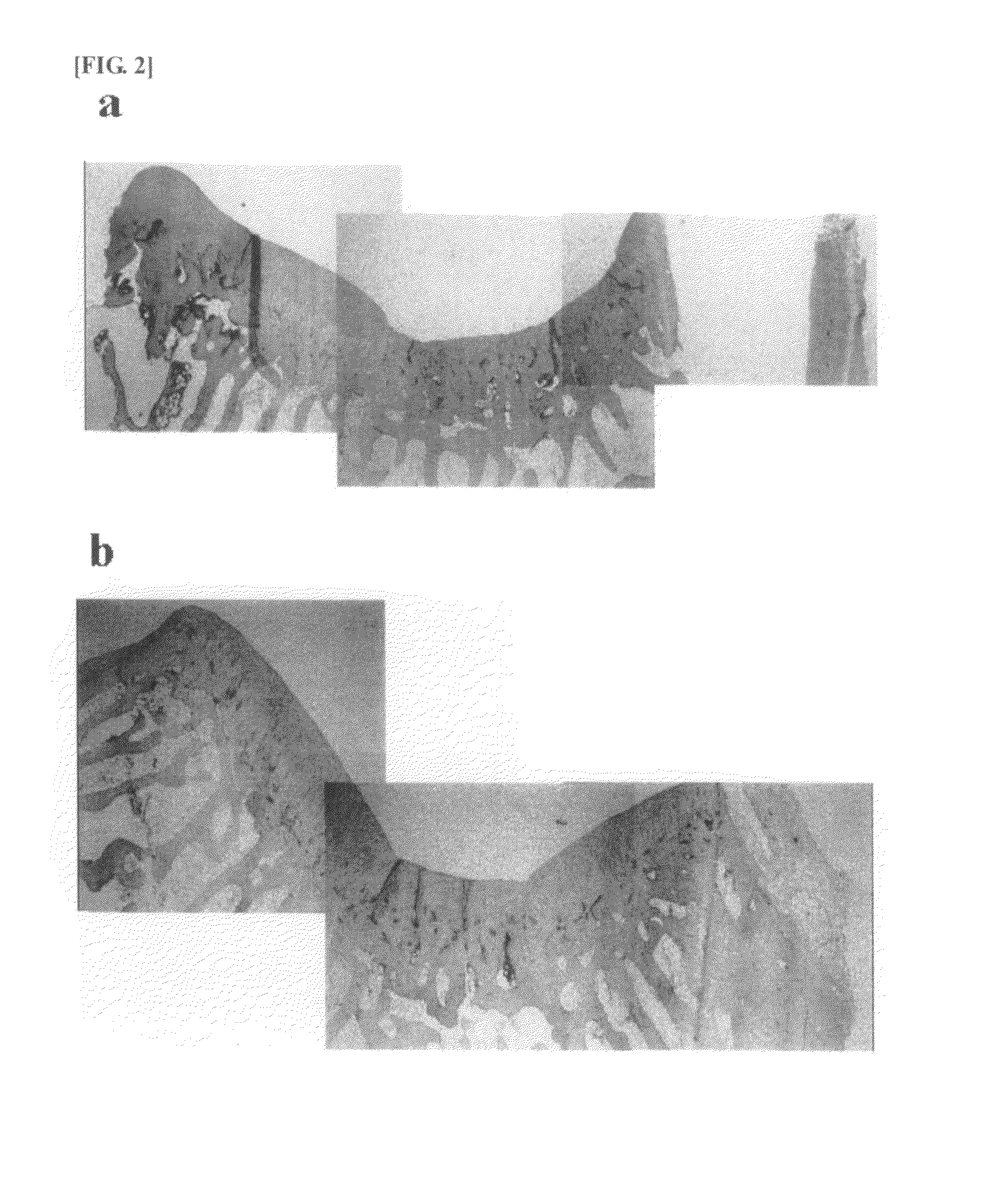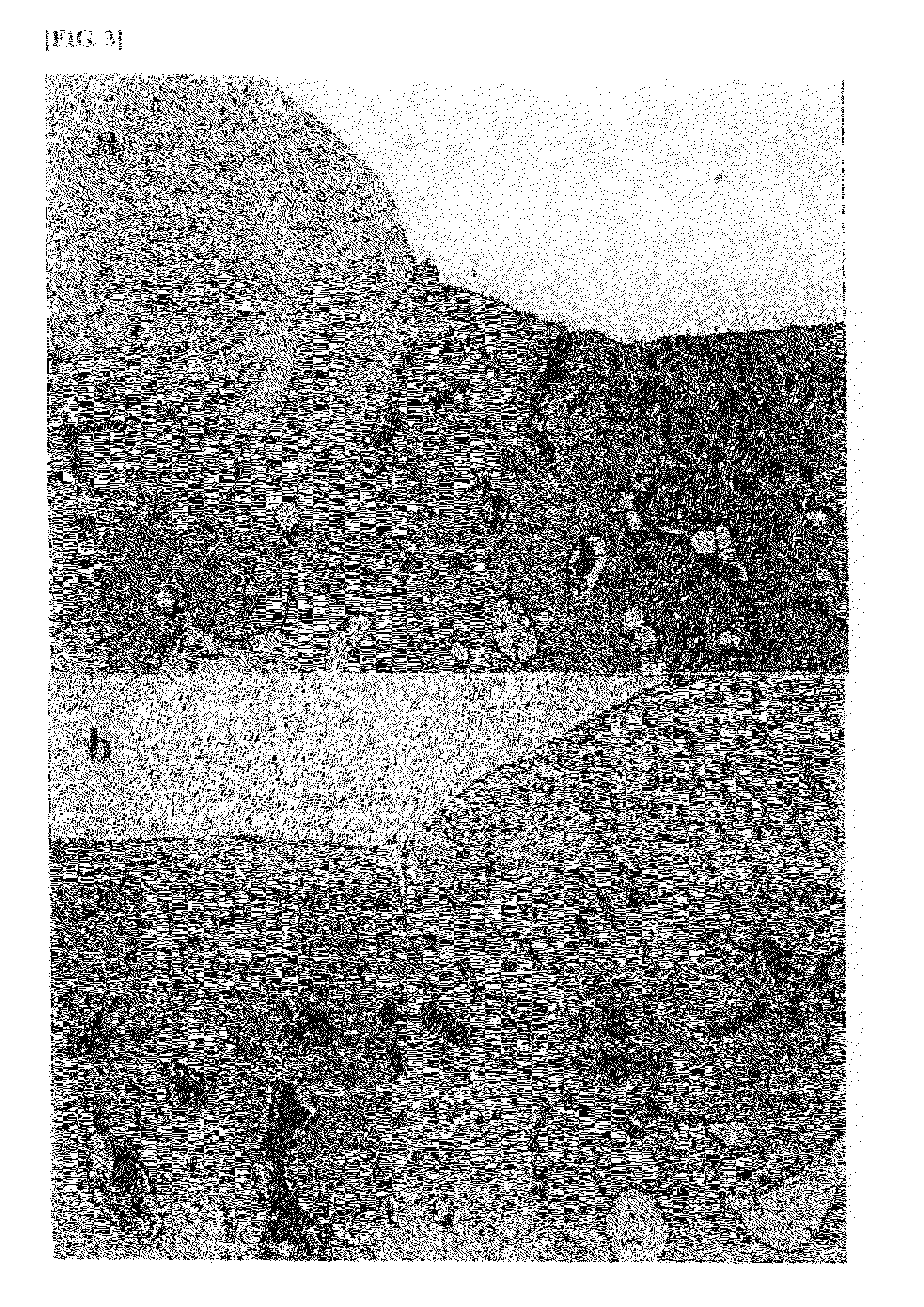Composition for treatment of articular cartilage damage
a technology for articular cartilage and composition, applied in the direction of drug compositions, biocide, bandages, etc., can solve the problems of chondroplasty not being satisfactorily effective in view of its functional aspects, difficult to treat completely articular cartilage damage, and reducing the quality of life as well as productivity, so as to reduce pain, sequelae and morbidity of patients, and secure the convenience of procedures
- Summary
- Abstract
- Description
- Claims
- Application Information
AI Technical Summary
Benefits of technology
Problems solved by technology
Method used
Image
Examples
Embodiment Construction
[0054]Hereinafter, the present invention is illustrated in more detail in a preferred embodiment of the invention. However, the scope of the present invention is not limited by that preferred embodiment and it could be changeable for human application.
[0055]Referring now to the drawings, illustrated in the following preferred embodiment are the methods of manufacture of the composition of the present invention and of treatment of the articular cartilage damage using the above.
[0056]Firstly, cellular components are separated and cultured as follows in order to manufacture the composition of the present invention:
[0057]Mononuclear cells are separated through centrifugal separation of the umbilical cord blood and washed several times in order to remove foreign materials. If they are plated and cultured in a culture dish and / or flask and / or other container after they are washed, cells are proliferated with forming monolayer. Among them, mesenchymal stem cells and / or stern / progenitor cel...
PUM
| Property | Measurement | Unit |
|---|---|---|
| temperature | aaaaa | aaaaa |
| temperature | aaaaa | aaaaa |
| volume | aaaaa | aaaaa |
Abstract
Description
Claims
Application Information
 Login to View More
Login to View More - R&D
- Intellectual Property
- Life Sciences
- Materials
- Tech Scout
- Unparalleled Data Quality
- Higher Quality Content
- 60% Fewer Hallucinations
Browse by: Latest US Patents, China's latest patents, Technical Efficacy Thesaurus, Application Domain, Technology Topic, Popular Technical Reports.
© 2025 PatSnap. All rights reserved.Legal|Privacy policy|Modern Slavery Act Transparency Statement|Sitemap|About US| Contact US: help@patsnap.com



